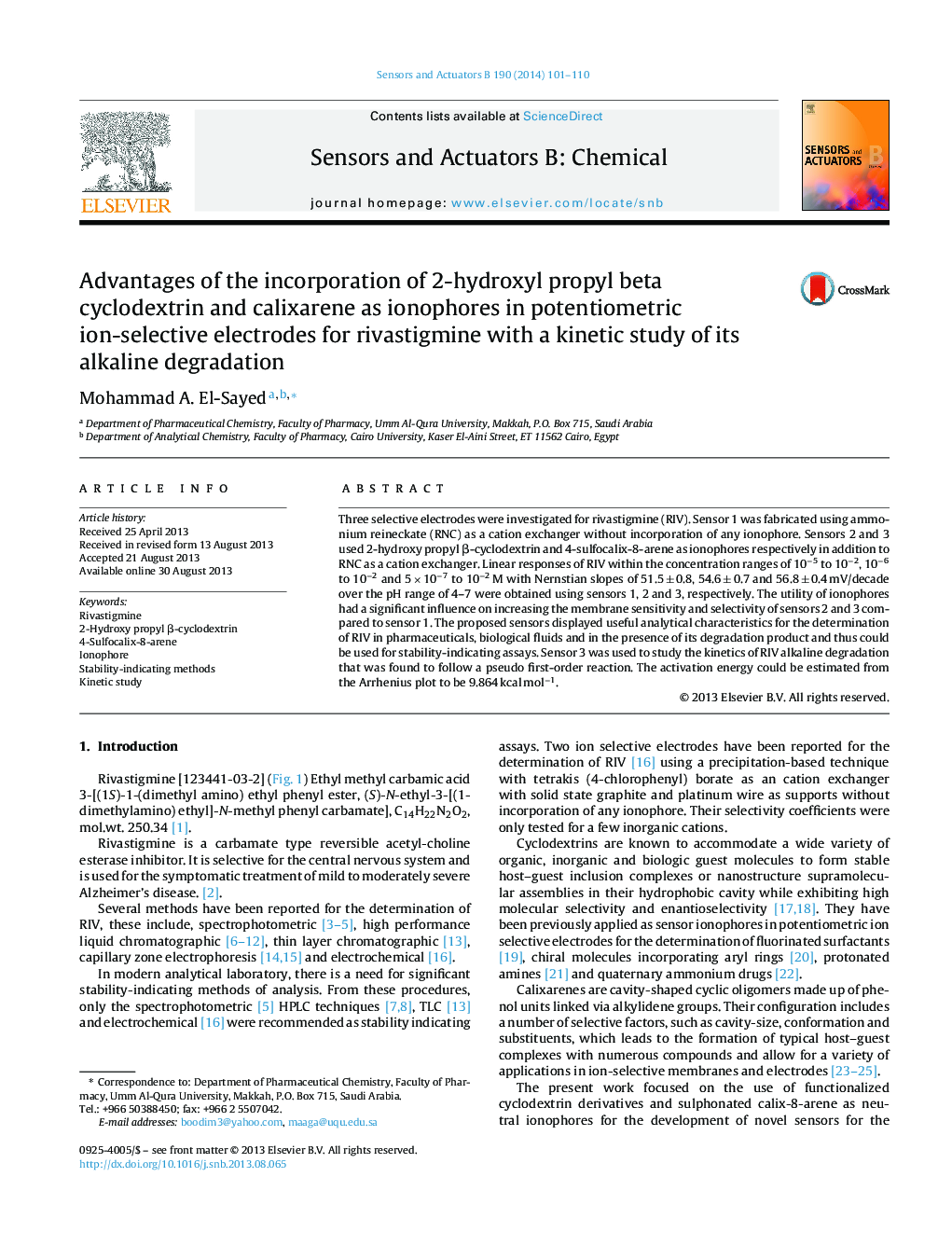| Article ID | Journal | Published Year | Pages | File Type |
|---|---|---|---|---|
| 7147471 | Sensors and Actuators B: Chemical | 2014 | 10 Pages |
Abstract
Three selective electrodes were investigated for rivastigmine (RIV). Sensor 1 was fabricated using ammonium reineckate (RNC) as a cation exchanger without incorporation of any ionophore. Sensors 2 and 3 used 2-hydroxy propyl β-cyclodextrin and 4-sulfocalix-8-arene as ionophores respectively in addition to RNC as a cation exchanger. Linear responses of RIV within the concentration ranges of 10â5 to 10â2, 10â6 to 10â2 and 5 Ã 10â7 to 10â2 M with Nernstian slopes of 51.5 ± 0.8, 54.6 ± 0.7 and 56.8 ± 0.4 mV/decade over the pH range of 4-7 were obtained using sensors 1, 2 and 3, respectively. The utility of ionophores had a significant influence on increasing the membrane sensitivity and selectivity of sensors 2 and 3 compared to sensor 1. The proposed sensors displayed useful analytical characteristics for the determination of RIV in pharmaceuticals, biological fluids and in the presence of its degradation product and thus could be used for stability-indicating assays. Sensor 3 was used to study the kinetics of RIV alkaline degradation that was found to follow a pseudo first-order reaction. The activation energy could be estimated from the Arrhenius plot to be 9.864 kcal molâ1.
Related Topics
Physical Sciences and Engineering
Chemistry
Analytical Chemistry
Authors
Mohammad A. El-Sayed,
